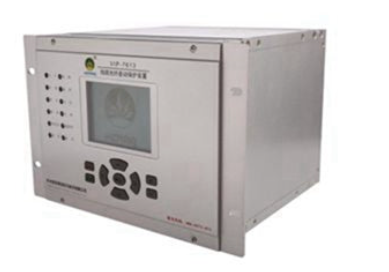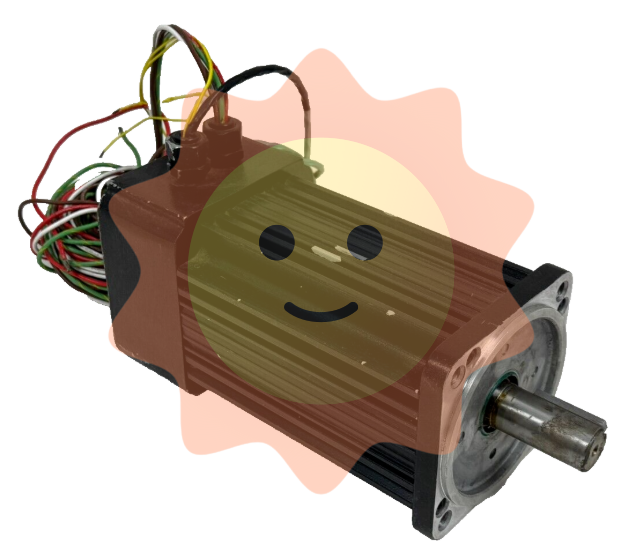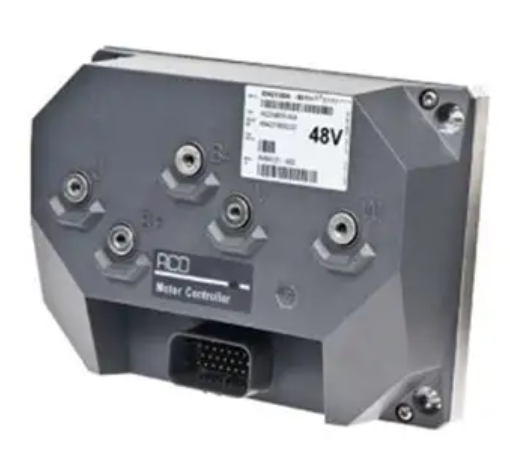Use of liquefied natural gas
Development bottleneck
1. Natural gas source
The biggest challenge for China in developing LNG is the source of gas. To alleviate the problem of gas supply in the eastern region, China has adopted the "West-east gas transmission" project. However, this project only solved the problem of insufficient supply of natural gas at that time. With the continuous improvement of China's national production level, the demand for natural gas in the market is increasing day by day, and the supply of natural gas has already become a problem. What we have to do at present is to find natural gas sources and increase the exploitation of natural gas, which is a more fundamental way to solve the shortage of natural gas supply. In the development of natural gas energy links to master more international resources of origin is also extremely important, China's natural gas source is not enough, and also gradually "west" development, we must do how to ensure that in the process of "west" development to occupy a favorable position. Only on the basis of sufficient gas supply can we talk about the healthy and sustainable development of LNG.
2. LNG prices
At present, the natural gas resources are monopolized by other countries in the world, and the price of liquefied natural gas continues to increase, which has a negative impact on China's vigorous development of natural gas. We all know that there is a direct link between the price of crude oil and the price of liquefied natural gas, and the rising price of liquefied natural gas is caused by the rising price of crude oil. In addition, the construction price of LNG projects has also been rising in recent years, which has also pushed up the overall price of natural gas. For example, the price of imported LNG in China has reached $15 /MMBTU in 2013. The continuous rise in the price of liquefied natural gas is also responsible for the slow development of natural gas in China.

3. LNG related technologies and equipment
As far as China's current form is concerned, there is no industrial application experience, no large-scale natural gas liquefaction technology, and no large-scale natural gas liquefaction plant, and this series of problems have caused the slow development of LNG in China. We should focus on the technological innovation of natural gas liquefaction, and apply science and technology to manufacture some liquefied natural gas equipment with independent intellectual property rights. China currently has a long way to go in terms of both technology and equipment for LNG.
4. Supply and demand of liquefied natural gas
China's demand for natural gas is increasing, but the current supply is simply not enough to support this populous country. In addition, the construction of natural gas liquefaction projects in Xinjiang, Hainan and other places also makes the supply problem become serious. In terms of use, natural gas has enough superiority and flexibility, but China does not have enough natural gas sources to exploit natural gas, but there are nearly 300 provinces and cities in China using natural gas. And so much demand is also what makes the price of natural gas in the world very high. This is not good for China's natural gas development.

Development suggestions edited broadcast
1. Search for natural gas sources
With the continuous improvement of Chinese people's living standards, China's demand for natural gas has become more and more urgent, but China has not yet defined the source of natural gas exploitation. At present, the main countries in the international development of gas fields are: Australia, Iran, Canada and so on. The fastest growing source of natural gas in recent years has been Australia, which is expected to export more liquefied natural gas in 2008 than any other country in the world. According to the survey, the emerging energy source is Africa. Canada is also not weak in the field of extraction, and it also has the construction of natural gas liquefaction plants in the LNG project.
2. Improve natural gas liquefaction technology and equipment
Equipment and technology with China's independent intellectual property rights are the main support for the development of LNG. With the equipment and technology with Chinese intellectual property rights can not only meet the development of our country's LNG industry, but also break the form of international monopoly. China's current technology for liquefied natural gas is too shallow, insufficient to support the demand of the entire Chinese market, China is a populous country, due to the slump in the oil market, natural gas has gradually become the main energy in the market, but the current national technology can not be realized. Therefore, we must first overcome the key technologies of the whole LNG industry chain, so that it can form a series of LNG technologies with intellectual property rights and complete equipment. Moreover, China is currently making great progress in the key equipment of cryogenic technology.

3. Improve the right to speak in LNG pricing
① China should speed up the development of coal bed gas, shale gas, pipeline gas, etc., to reduce the impact of rising international LNG prices on the Chinese market.
② It is necessary to firmly lock in the international situation through research, attention and other means, and use investment, mergers and acquisitions and other methods to obtain the shares of LNG producers and LNG upstream gas resources. At present, China is in the beginning stage of LNG, and it is necessary to create a good policy environment. Economic interests must not be allowed to stand in the way of LNG. In order to make the development of LNG sustainable, when choosing partners, we must pay attention to the diversification of partners, which can make the technology more convenient and more conducive to development.
Research status
1. Foreign research status
Natural gas now accounts for a third of the world's energy production, and is likely to push the current popularity of oil and coal into secondary status in the near future. By 2020, natural gas will account for 45 to 50 percent of the world's energy needs. At present, the world's annual demand for natural gas exceeds 2.5×10m, and the amount entering international trade is (6250-6500) ×l0m, of which about 33% is sold in the form of LNG. According to the 20th World Gas Congress and related data, the potential demand for natural gas in the world will increase to 4×10m before 2030, and liquefied natural gas has always been a market segment product. Its consumption is growing at 10 per cent a year, with global LNG demand set to rise from 218 million tonnes in 2010 to 310 million tonnes in 2015 and 410 million tonnes by 2020. LNG demand grew 8.5% in the first half of 2011 compared with the same period last year, and 12% for the full year, mainly driven by new demand from Japan, the UK and India, as well as increased demand from traditional buyers in South Korea. It is expected that by 2015, China's natural gas supply structure will be 170 billion cubic meters of domestic gas, 90 billion cubic meters of net imports, and natural gas consumption will reach 260 billion cubic meters, accounting for the proportion of primary energy consumption will rise from the current 4% to 7% to 8%. In 2011, China's natural gas consumption was 131.3 billion cubic meters, and the proportion of natural gas in primary energy consumption is likely to increase to 10% to 15% .
In recent years, with the rapid development of the world natural gas industry, LNG has become an important part of the international natural gas trade. Compared with ten years ago, the world LNG trade volume has doubled, showing strong growth momentum. It is predicted that in 2012, the trade volume of LNG in the international market will account for 36% of the total trade volume of natural gas, and by 2020 it will reach 40% of the trade volume of natural gas and account for 15% of natural gas consumption.
Foreign liquefaction plant large scale, complex process, equipment, high investment, basically adopt step refrigeration and mixed refrigerant refrigeration process, the two types of devices are in operation, the new design is mainly mixed refrigerant refrigeration process, the main purpose of research is to reduce liquefaction energy consumption. The refrigeration process has been improved from step refrigeration to mixed refrigerant refrigeration cycle, and there are reports of a new CⅡ-2 process, which not only has the advantages of pure component cycle, such as simple, no phase separation and easy control, but also has the advantages of mixed refrigerant refrigeration cycle, such as good coordination of natural gas and refrigerant refrigeration temperature, high efficiency and less equipment .

The first industrialisation of Liquefin, an advanced new natural gas liquefaction process developed by Axens in collaboration with the French Institute of Petroleum Research (IFP), has laid the foundation for the LNG market. Its production capacity is 15%-20% higher than the general method, and the production cost is 25% lower. After Liquefin method is used, the output of each unit liquefaction unit can reach more than 600×104t/y. LNG production costs using the Liquefin process can be reduced by 25% per tonne. The main advantages of this process are the use of finned heat exchangers and thermodynamic optimization of the process, which can build a very large capacity liquefaction plant. Axens has proposed the process for use in several major regions, including the United States, Europe and Asia, and is conducting preliminary design and feasibility studies. The safety, environmental, practical and innovative features of the Liquefin process developed by IFP and Axens have recently been recognised worldwide with the Institution of Chemical Engineers' Engineering Excellence Award.
The University of Texas Engineering Experiment Station has developed a new type of natural gas liquefaction technology - GTL technology has been patented. The technology is more suitable for small-scale installations than the currently developed GTL technology and can process 30.5×104m3/d of natural gas. The GTL for the experimental station has been licensed to Synfuels. The company has built a GTL pilot plant near the A&M University campus and is currently conducting economic simulation analysis. The new process, which is much simpler than existing technologies, does not require syngas and does not require the use of oxygen in addition to generating electricity. Its economy, scale and production are different from the ordinary Fischer-Tropsch GTL process. The first industrial plant could be completed in the first half of 2004.

2. Domestic research status
As early as the 1960s, the State Science and Technology Commission formulated the development plan of LNG, and completed the industrial test in the mid-1960s, Sichuan Petroleum Administration Weiyuan Chemical plant has the earliest industrial production unit of natural gas cryogenic separation and liquefaction, in addition to the production of He, but also the production of LNG. In 1991, the plant provided 30tLNG as rocket test fuel for the Space Department. Different from the foreign situation, the domestic natural gas liquefaction research is aimed at small-scale liquefaction process, and the related literature has been published more. The following is a brief introduction to the existing domestic natural gas liquefaction plant process.
In 2011, the CRN value of the market sales of China's LNG industry was about 80%, of which the proportion of the three state-owned enterprises of petrochina, Sinopec and CNOOC reached nearly 60%, and the sales areas were mainly concentrated in Tianjin, Shandong, Guangdong, Xinjiang and Shaanxi. In terms of LNG imports, by the end of 2011, China had put into operation five LNG receiving stations, with a total receiving capacity of 15.8 million tons per year. When completed by 2014, China's LNG receiving capacity will reach 33.8 million tons/year. China's natural gas geological resources are estimated to exceed 38 trillion cubic meters, the prospect of recoverable reserves is promising, according to the international standard, is expected to be recoverable reserves of 7-10 trillion cubic meters, recoverable 95 years, in the world is relatively rich in resources in the country. The land resources are mainly concentrated in Sichuan Basin, Shaanxi-Gansu-Ningxia region, Tarim Basin and Qinghai Province, while the sea resources are concentrated in the South China Sea and East China Sea. In addition, there are some resources available in the Bohai Sea, North China and other areas. Due to the lack of effective utilization of resources after exploration, and the lack of matching policies, the unreasonable gas use structure has restricted the healthy development of China's natural gas industry to a certain extent. However, with China's social progress and economic development, it will be an inevitable trend for natural gas to become the main energy source .
(1) Sichuan liquefied natural gas plant
The 300l/h natural gas liquefaction plant developed by Beijing Keyang Gas Liquefaction Technology Joint Company of Chinese Academy of Sciences and Keyang Cryogenic Equipment Company of Jianyang City, Sichuan Province, is a demonstration project of using LNG as industrial and civil gas peak balancing and gas instead of oil. The unit was completed in 1992 to provide LNG for LNG vehicle research.
The device makes full use of the pressure of natural gas itself, adopts gas turbine expansion mechanism to cool natural gas to liquefy, and is used for civil natural gas peak balancing or LNG production. The process flow is reasonable, and the gas turbine expansion machine is adopted, and the technology is relatively advanced. The device basically does not consume water and electricity, is an energy-saving project, but the liquefaction rate is very low, about 10%, which is consistent with its design principle.

(2) Jilin Oilfield liquefied natural gas installation
The 500l/h skid mounted industrial test device jointly developed by Jilin Oilfield, China National Petroleum Corporation and the Low temperature Center of the Chinese Academy of Sciences was successfully tested in December 1996. The device adopts the expansion machine cycle process with nitrogen as the refrigerant. The whole device consists of 10 skid blocks and all the equipment is made in China.
The device adopts gas bearing turbine expansion machine. Domestic molecular sieve deep removal of water and CO2 in natural gas, the process is simple, the use of skid-mounted structure, in line with the characteristics of small devices. Using pure nitrogen as refrigerant, the power consumption is higher than that of the expander cycle using refrigerant. The natural gas is liquefied at medium pressure (about 5.0MPa) without making full use of its own pressure (liquefaction at higher pressure can both increase the refrigeration temperature of nitrogen and reduce the refrigeration load), so the device has a large power consumption.
(2) Shaanxi North Gas Field liquefied natural gas
The 2×104m3/d "Shanbei Gas Field LNG Demonstration Project", which was completed and put into operation in January 1999, is a pilot project for the development of China's LNG industry and the first small LNG industrialization plant in China. The equipment adopts natural gas expansion refrigeration cycle, low temperature methanol washing and molecular sieve drying to purify raw gas, gas wave refrigerator and turbine expansion machine to perform low temperature refrigeration, gas engine as the power source of circulating compressor, and gas engine tail gas as the heat source of heating molecular sieve re-gas. The equipment is all made in China. The successful operation of the plant provides experience for China to produce LNG from natural gas in remote oil and gas fields.
(4) Zhongyuan Oil Field liquefied natural gas plant
Zhongyuan Oilfield has built the largest LNG plant in China, with a raw gas scale of 26.65×104m3/d, a liquefaction capacity of 10×104m3/d, a storage capacity of 1200m3 and a liquefaction rate of 37.5%. At present, on the basis of fully absorbing foreign advanced technology, combined with the situation of relevant equipment at home and abroad, mainly for the characteristics of their own gas source, and research LNG process technology. The process adopts the common molecular sieve adsorption method for dehydration, and the liquefaction process uses propane precooling + ethylene precooling + throttling.
When the raw gas volume is 30×104m3/d, the yield is as high as 51.4% and the energy consumption is 0.13Kwh/Nm3. Its advantage is that each refrigeration system is relatively independent, reliability, flexibility. However, the process is relatively complex, requiring two kinds of refrigeration media and circulation, and the equipment investment is high. The liquefaction cost is low because the plant makes full use of the pressure energy of natural gas in oil field gas Wells.

(5) Small liquefied natural gas unit of Tianjin University
Compared with large LNG plants, small LNG plants not only have raw material advantages, market advantages, but also have low investment, relocation and flexibility. LNG plant mainly uses amine solvent system to pretreat natural gas and remove CO2 and other impurities; Molecular sieve dehydration; Liquefy several steps. The device adopts a single-stage mixed refrigeration system; Compressors for closed loop refrigeration cycles compress refrigerant. The single-stage refrigerant mixing process is simple and efficient, and is suitable for small LNG plants.
The compressor can be driven by gas turbines or electric motors. Where electricity prices are low, priority can be given to electric motors (low cost, simple maintenance). In areas where fuel gas prices are low, gas turbines will be a better option. The economic evaluation results show that the investment cost of liquefaction plants with gas turbine drives is 2 million to 4 million US dollars higher than that of electric motors. According to the cost estimation of a set of 15×106ft3/d liquefaction unit, the storage tank volume of the LNG project for peaking is 100,000 m3, while the LNG project for vehicle fuel only needs 700m3 storage tank, resulting in the final cost of LNG for peaking is 2.03~2.11 USD /1000ft3. However, the cost of automotive LNG is only 0.98~0.99 USD /1000ft3 [8].
(6) New liquefaction technology of Southwest Petroleum University
The process processes 3.0×104m3 of natural gas per day, which is mainly composed of raw gas (CH4:95.28%, CO2:2.9%) deCO2, dehydration, propane precooling, gas wave refrigerator refrigeration and cyclic compression systems. Using SRK equation of state as the basic model, natural gas liquefaction process software was developed. Natural gas compressor is powered by natural gas engine, and small load electric equipment is powered by natural gas generator set, which solves the problem of no electricity or power shortage in remote areas. Since there is no gathering pipeline available in remote areas, the unliquefied natural gas is cycled and compressed to improve the liquefaction rate of the whole unit.
CO2 was removed by the ethanolamine process (MK-4). Due to the small processing capacity, the absorption tower and the regeneration tower of carbon dioxide removal should use high-efficiency packing tower. Due to the mixed refrigerant, there is no mature technology and experience in design and operation management in China, and the instrument control system is more complex. At the same time, considering the high methane content in the raw gas, the pressure energy can be used. Therefore, natural gas direct expansion refrigeration is used as a natural gas liquefaction cycle process. Gas wave refrigeration belongs to isentropic expansion process. The gas wave refrigeration machine is developed on the basis of the hot separator and the theory of gas wave motion. It absorbs some advantages of the thermal separator in structure, and increases the key device of the microwave absorption cavity, which is obviously different from the thermal separator in principle, and makes more effective use of the pressure of the gas, and improves the refrigeration efficiency.
(7) Harbin Gas Engineering Design and Research Institute and Harbin Institute of Technology
The LNG system mainly includes natural gas pretreatment, low temperature liquefaction of natural gas, low temperature storage of natural gas and gas gasification and output. The treated natural gas is liquefied through a multi-stage mono-mixture condensation process, and the refrigeration compressor is powered by a natural gas engine. The LNG storage tank is a bimetallic walled insulated tank, the inner tank and the outer tank are made of nickel steel and carbon steel respectively.
Circulating gas compressors are generally driven by natural gas, which can save operating costs and make the investment quickly recovered. Compressors generally use non-lubricated special design to avoid natural gas being contaminated by lubricating oil. The turbine is equipped with an electronic speed control system, and the final blades of the new turbine are made of drill alloy, which improves the mechanical operation. The new clutch installed on the turbine compressor is flexible, they are relatively reliable, and can also adjust the clearance.
Domestic production
The first unit of Putian gas power plant in Fujian province goes into operation
On the morning of December 23, 2008, the opening ceremony of the first 3 and 4# storage tanks and gas-fired power plant of the first phase of Fujian LNG Station Line project was held in district, Meizhou Bay, Putian City, Fujian province.
After the completion of the construction of the new 3 and 4# storage tank project, the storage tank capacity of the Fujian LNG station line project will reach 640,000 cubic meters, which can meet the harsh working conditions of 10 generating units that are full and stopped many times a year. The new storage tank will greatly increase the flexibility of gas storage and peak regulation, providing protection for the gas safety of existing users and the flexibility of new users.
According to the plan, between 2015 and 2020, Fujian Province will form a "two vertical and two horizontal, north-south extension" natural gas pipeline network pattern. Among them, the layout of the ring network is from Zhangzhou along the Zhanglong Expressway to Longyan, from Fuzhou along the Jingfu Expressway to Nanping, and then from Nanping to Zhangping, Yongan, Sanming, Shaxian to Longyan, and the current Fuzhou-Zhangzhou pipeline to form a "two vertical and two horizontal" ring gas supply network structure, which is used as a gas supply platform to connect the corresponding gas transmission branch lines and set up sub-transmission stations, covering the main gas market in the province. The "north-south extension" dispatching line refers to from Fuzhou to Ningde, Fuan, north to Fuding; From Xiamen Xiang 'an through Zhangzhou and Zhangpu south to Zhao 'an, people in Fujian Province can use clean and environmentally friendly natural gas at the same time.

At the same time, the Putian Gas Power Plant #1 unit, which uses the heavy-duty 9F gas-steam combined cycle generator set, successfully passed the 168-hour trial operation before and is now officially put into operation. It is reported that the first phase of the Putian gas power plant project will build four sets of generators, the total investment of the project is 5.08 billion yuan, and the annual power generation will be 6 billion KWH after the first phase of the project is put into operation. The use of clean energy LNG in the power plant can effectively promote energy conservation and emission reduction, improve the conversion rate of primary energy to secondary energy, and reduce carbon dioxide emissions by about 2 million tons per year. The #2 unit under construction has completed part of the engineering commissioning and is expected to be put into trial operation in April 2009 .
China's largest liquefied natural gas reserve base has been put into operation
On September 26, 2022, CNOOC announced that the "Green Energy Port" of CNOOC Yancheng successfully received and unloaded the first ship of LNG, marking the realization of the largest liquefied natural gas reserve base in China
- EMERSON
- Honeywell
- CTI
- Rolls-Royce
- General Electric
- Woodward
- Yaskawa
- xYCOM
- Motorola
- Siemens
- Rockwell
- ABB
- B&R
- HIMA
- Construction site
- electricity
- Automobile market
- PLC
- DCS
- Motor drivers
- VSD
- Implications
- cement
- CO2
- CEM
- methane
- Artificial intelligence
- Titanic
- Solar energy
- Hydrogen fuel cell
- Hydrogen and fuel cells
- Hydrogen and oxygen fuel cells
- tyre
- Chemical fiber
- dynamo
- corpuscle
- Pulp and paper
- printing
- fossil
- FANUC
- Food and beverage
- Life science
- Sewage treatment
- Personal care
- electricity
- boats
- infrastructure
- Automobile industry
- metallurgy
- Nuclear power generation
- Geothermal power generation
- Water and wastewater
- Infrastructure construction
- Mine hazard
- steel
- papermaking
- Natural gas industry
- Infrastructure construction
- Power and energy
- Rubber and plastic
- Renewable energy
- pharmacy
- mining
- Plastic industry
- Schneider
- Kongsberg
- NI
- Wind energy
- International petroleum
- International new energy network
- gas
- WATLOW
- ProSoft
- SEW
- wind
- ADVANCED
- Reliance
- YOKOGAWA
- TRICONEX
- FOXBORO
- METSO
- MAN
- Advantest
- ADVANCED
- ALSTOM
- Control Wave
- AB
- AMAT
- STUDER
- KONGSBERG
- MOTOROLA
- DANAHER MOTION
- Bently
- Galil
- EATON
- MOLEX
- Triconex
- DEIF
- B&W
- ZYGO
- Aerotech
- DANFOSS
- KOLLMORGEN
- Beijer
- Endress+Hauser
- MOOG
- KB


Email:wang@kongjiangauto.com
























































































